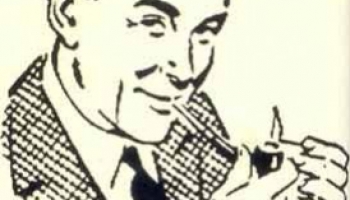- There are no more items in your cart
- Shipping Free
- Total €0.00

The first smoke
Published : 06/13/2019 15:45:28 - Categories : Pipe
A good pipe can be taken and smoked immediately. It will give its best after some time (and some attention). A new pipe doesn't need any preliminary preparation. Alcohol mustn't be used. For the first times, the pipe can be only partially filled; it's better anyway to fill it loosely. What's important is to let the carbon “crust” build up inside the chamber and also cover the heel.
The carbon cake is very helpful: it preserves the pipe, absorbs moisture, cools down and softens the smoke. But let's not make it an obsession. A one-millimeter-thick layer is convenient.
A new pipe mustn't be smoked continuously. It needs longer rests than the others, so it mustn't be smoked more than two times in a day.
The pipe should be then filled gradually. The first bits of tobacco should be loose; then, packed more tightly. Don't let the tobacco spill over the rim of the chamber. A pipe well filled will also smoke well.
Carefully light up the whole surface. Then flatten the tobacco that has fluffed up and relight. Avoid gasoline lighters, as they pass on bad odors to the tobacco.
A pipe should be smoked with slow, short, rhythmical and far between puffs. No bellows, no smoke puffs. The smoke mustn't be swallowed or inhaled into lungs: it should be tasted between mouth and nose. That's why pipes are also healthier.
Hard and frequent puffs heat up the pipe and will burn your tongue. That's the trouble of many who switch from cigarettes to pipes. Reduce rhythm and intensity.
It's appropriate, at the beginning, to also reduce the number of smokes. In any case don't worry, the tongue will get used to it.
With practice you'll learn to avoid the saliva from dripping down the mouthpiece and the shank. There are “humid” smokers, but there's always pipe cleaners. It's enough to use them, even during a smoke.
Moisture often depends on tobacco, and nearly always on incorrect, fast, and frenetic smoking. Remember: the more heat, the more condensation, the more drizzle.
It's no big deal if the pipe goes out, just relight it. Only when tight and humid tobacco sediment forms on the heel is it better to empty it out.
The good draft, with a little attention, becomes automatic. Tamp down the tobacco as the combustion progresses. Don't eliminate the ash, as it is useful for maintaining the combustion.
If you think there's too much, there is nothing wrong with removing the ash that spontaneously falls out by capsizing the chamber. A little bit of ash remaining after having a smoke is a beautiful but not frequent occurrence. Some unburned tobacco nearly always remains at the bottom of the bowl. Everything will be removed by tapping the pipe against the palm of your hand (never against something hard) or using the pipe cleaner on a flat surface.
A clean and dry pipe doesn't stink. And it does not give off acrid smoke. After each smoke empty the pipe and blow hard in the mouthpiece. If possible, use immediately a pipe cleaner without opening the pipe. Let the pipe cool down completely before another smoke. A pipe can be smoked two or three times consecutively, with reasonable intervals to allow for cooling. Then it will need rest: at least one day, but better if three or four, enough time for it dry completely. Straight pipes become less moist than the curved ones, so they can be used more often. You can't start with only one pipe, at least two are needed. Up to how many? The only limits are those of economic possibilities, and the duty to “honor” all the pipes you own. A pipe wants its rest, but it also wants to be smoked. A good, well-kept pipe can last a lifetime.
